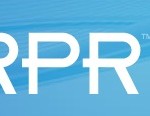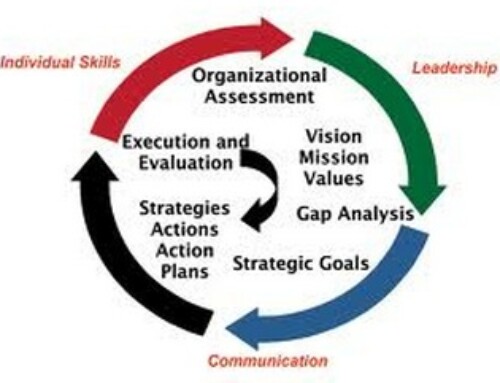 I took my car in for service today, it gave me a chance to spend some time furthering my understanding of a new technology tool – RPR. I was looking at training videos and reports for a broker who is studying how agents will use it to devise an integration plan for their business. This broker takes a very serious approach to data licensing and an even more serious approach to the tools that company agents use to work with clients. This broker wants to leverage the product in the best possible way – or not at all.
I took my car in for service today, it gave me a chance to spend some time furthering my understanding of a new technology tool – RPR. I was looking at training videos and reports for a broker who is studying how agents will use it to devise an integration plan for their business. This broker takes a very serious approach to data licensing and an even more serious approach to the tools that company agents use to work with clients. This broker wants to leverage the product in the best possible way – or not at all.
Sitting next to me in the waiting room was a consumer. This fellow, Frank had just sold his home in Santa Barbara, a county south of San Luis Obispo and outside of the local MLS area. He saw me looking at property information on the iPad, and asked what site I was using. I told him that it was REALTORS® Property Resource – a tool that REALTORS® use to help customers understand the business side of real estate that is important to the process of buying and selling a home. “My agent did not show me anything like that,” he acknowledged.
“Give me your property address,” I retorted. He did, and I looked it up. The property did not show as Listed (Santa Barbara has not signed up for RPR) and because it was sold 8 days ago, it did not show up in public record either. So the property details of his home were in limbo – the basic RPR tax data set surrounded by reports.
We looked at the public record data on his home – it was correct. He told me his story about selling the house. He sold it for $450k – short sale where he had to pony up $10k. He now lives in a 2200 square foot cottege on an estate in Montecito right now. He said that he constantly checked Zillow for the Zestimate while his home was on the market – it was his favorite site. Zillow had the listing Zestimated around $400. “It was always low but it seemed to track with the market pretty evenly over time,” he claimed.
The RPR RVM estimated his home value at $456. I was stunned by the accuracy and do admit – it was a lucky hit (other research shows that all AVMs are more of an intuition than an exact science) so we were looking good. I handed him the iPad and he scrolled through the report on his home, the market reports, etc. “This is amazing,” he proclaimed. “I never imagined that there was so much information about my home on the Internet.” I explained that this is only available to REALTORS®, he was impressed. His car was finished with service (late model BMW 750LI), he shook my hand and gave me his business card. Said that he is planning to replace his home when the market stabilizes and promised to give me a call. For Frank, the RPR reports were great.
After he left, a woman joined my waiting room which I was fashioning as a focus group. I asked her if she had heard of an MLS before. WAV Group is researching consumer impressions on the MLS as a brand. She laughed and said that she is a REALTOR®. Kim Wurster from San Luis Obispo REALTY stopped to have her car washed (thanks for the tip, Kim – I did not know about the free car wash program!). I asked her if she had used RPR yet (it just launched in this area). I told her my story about Frank.
Kim whipped out a smart phone and pulled up an email of a buyer she is working with. She mentioned that this guy loved doing all of the research himself. She pulled up the address of a listing he is interested in. We took a look at the property using RPR. As she scrolled through 16 pages of reports she said, “this is good.” Some of the comps were not right, but I explained that she could remove those. She continued to scroll – “These graphs and reports are great!” “Wow – look at the number of robberies!” She sent herself the report, committed to sign in to RPR and make a report for her customer. One at a time, I thought.
WAV Group does not consult with RPR, although we have done research for Brokers, MLSs and Associations that are grappling with the decision to license their data, and offer RPR as a member benefit. Our job has never been to make the choice for our client – but rather to make sure that they have all of the information. They are complex decisions that only stakeholders can make. Since every MLS and Association is different, their decision-making criteria are different. There is no ‘one size fits all’ in real estate – ever. Lots of financial, strategic and political influences are always considered by the board of directors.
I would encourage MLSs and Associations to keep this in mind. If you plan to license data to RPR or anyone else, or offer any technology as a member benefit – you need to prepare to work hard at training and communications. Technology is useless if it does not reach Kim, the agent – or Frank, the consumer. Technology is not magic – it is a resource, like capital. If you allow it to sit on a server somewhere, it will only languish.
Last, do not expect any vendor to do all of the work for you when you launch a product. They will help you, but the responsibility is yours to engage agents in adoption. This is true for every member benefit you offer.





“Last, do not expect any vendor to do all of the work for you when you launch a product. They will help you, but the responsibility is yours to engage agents in adoption.”
I couldn’t disagree more with this statement. Who’s responsibility was it to get members to use Facebook? Or the iPad? Or Twitter? I had no idea the MLS had such “psychic mind control” over their members. If the MLS “fails” to get their members to use my product, can I send them a bill for my development efforts? It’s their “fault” after all isn’t it?
Bottom line is that the market will decide, not the MLS, whether a product makes the cut.
I respect your opinion Greg. Perhaps the reason why you have been successful so many times in your career is that you have this core belief. Consider all of the products that an MLS pays for, “per member per month”, that have low percentages of adoption – where do you draw the line and cut the product?
is 1% good enough?
is 5% good enough?
What percentage of adoption would you want your product to be measured by?
@victor Complicated question. I would strive for 100% but you first you have to ask, 1% or 5% of what? Many MLS providers talk about the fact that more than 50% of their membership have not been part of any transaction for a year or more. Then you have to ask what does adoption means? Do they use the product once a day? Once a month? Once a quarter? Our MLS customers have access to a real time dashboard to this type of data.
To me an MLS provider can help a good product get better adoption but they will never succeed in getting a poor product widely used no matter how much lipstick you put on that pig.
“To me an MLS provider can help a good product get better adoption………”
That was the point of my post – MLSs should not think that they just turn it on and agents jump in and start attending online trainings and figuring it out themselves. MLSs are Service Companies. They need to provide service – which includes product communications and training. If they are just a conduit allowing agents to log on to a bunch of software tools, they add no value.
Do you know that many MLS have less then 5% user adoption on Mobile MLS search, but 90% of agents say that it is one of the most important MLS services? Paradox, right?
Its because someone (MLS or Association or Broker) needs to grab the agents phone and walk them through downloading the app or bookmarking the URL and logging in the first time. They need help, which is why they pay the MLS and the Association a premium.
So, what is the number? 1% user adoption, 5%? Should the MLS turn off Mobile or find a better solution? How long should they give the product a chance? Remember – unlike RPR (which is free in exchange for the data license), they are paying some rate per member per month for the product.
These are tough decisions and they are complicated questions. There is also a risk when a new product is offered. What if 1% of your most productive agents love it – but 99% hate it or have never tried to use it. Do you turn it off and crush the hearts of the people that depended on you for the service?
Moreover, what if they have customers enrolled in the solution and you are not providing an alternative (think IDX or VOW).
Interesting exchange. Having grown up in the MLS world and trained and sold on many software products I think I have changed my opinion of late. I personally agree with Greg on this one that the vendor should be prepared to do what they need to do to have their product adopted or move over and let a vendor with a better product and plan move in. I think the idea of MLSs providing access to tools their leadership agrees on is great but outside of the MLS system,when we are talking about “optional tools” I think you let them know what’s there but it’s not the MLS’s role to really evangelize a product. As part of this I also don’ t thing MLSs should automatically spread the cost across the entire membership for these types of tools. A number of MLSs I work with provide products as options, including mobile so only those that want it use it and pay for it. If this is the case who cares if it is 1% or 5%? I see “tiered services” as a natural way to deal with this. Let the agents that get it, that want to use technology, pay for it. They are ones making the money anyway.